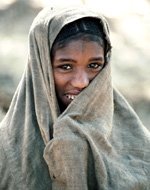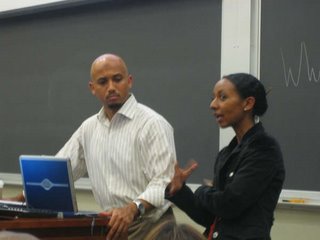THE BLUEPRINT—How to move beyond Rhetoric, and Passionate but Impotent Discourse about the Government and move to Tangible Solutions
By: Nasir Al-Amin
Typically, the Christmas Season and New Years creates a wave of Ethiopians from the diaspora traveling back to Ethiopia for the festive seasons. In most cases, those who journey back to Ethiopia allocate their time in two ways. The first way, is the initial few days and/or week are allocated to visiting various family members. The second way/or second segment of their time is allocated to clubbing everyday into the AM and then sleeping until 12 or 1 PM. As well as making week/weekend excursions to So-daray and Lunganew. However, traveling back to Ethiopia is bigger than that, it’s bigger than Bole, the nightlife, and weekend excursions to So-daray and Lunganew, thus I’m writing to offer a third and/or an alternative to the latter allocation of time spent in Ethiopia. It is an alternative that is life altering, and engenders clarity to ones purpose in life.
Therefore, this alternative I call the Blueprint. And the Blueprint is a commitment that your trip to Ethiopia will be one of purpose one that will touch the lives of others. This is done by making site visits to various Non-Governmental Organizations (NGO) in Ethiopia who are providing services to poor women and children, people infected or affected by HIV/AIDS, shelters/drop in-centers for street children, alternative/non-formal education programs, and interventions for orphans.
There are numerous benefits to taking on this commitment. One, it would raise your personal awareness about the plight of vulnerable populations in Ethiopia as well as the services being afforded them. Two, you would be able to come back to your community, college/university, ESA, or place of employment equipped to speak with confidence and insight about the realties on the ground in Ethiopia, as well as arrange awareness and fundraising events for NGOs that you previously visited—it would be a trickle down effect, as those close to you would trust that if you are willing to spend your time and contribute financially to a particular NGO then they should as well. Third, those who are interested in education could visit schools in Ethiopia and return with interviews you conducted with the teachers and students that would serve as a stimulus for establishing a BACK TO SCHOOL campaign that would serve to raise awareness as well as secure vital supplies for children in Ethiopia: backpacks, school uniforms and supplies. Fourth, and maybe arguably the most important, it would show the marginalized and impoverished women and children that Ethiopians of the diaspora care—I know some like to think that every Ethiopian in Ethiopia knows that their brothers and sisters abroad care about their well being, but that’s a fallacy, I have spoken with some of the underserved women and children and they feel forgotten by their brothers and sister in the diaspora. *(I know that statement and the following will engender a bit of hate mail but I’m fine with that.) Furthermore, I’m not referring to that emotional feeling of care and concern, I’m talking about the tangible care and concern that moves one beyond rhetoric and into action, as impotent café rhetoric doesn’t get the little girl who dropped out of school due to a lack of funds for a school uniform and supplies back in school, nor does it afford the mother of the shoeshine boy enough money to feed herself and his siblings.
So here are the logistics of the Blueprint: I have attached a document (click on the title or the link below) that details the NGOs working in Ethiopia and on the side panel of this blog under the section Ethiopian NGOs click on the link: Index of NGOs working. Today, is October 1st, for one month you could search the two sites and look at the work and populations served (orphans, HIV/AIDS infected and/or affected women and children, street children…etc) by the various NGOs and in November contact the NGOs via phone and/or e-mail. During the contact all you have to mention is the following:
I’m an Ethiopian living in __________ I plan to visit Ethiopia during the month of December. I want to learn more about the work you do can I visit your location?
It’s that simple! I know some of you are saying the problems faced by Ethiopia are bigger than that and are not that simple. A note to you:
“Though primary schooling in Ethiopia is free, for the average Ethiopian living below one dollar a day it is difficult to cover their families’ school expense like uniforms, exercise books and school maintenance cost.”
“Nearly 4.9 million adolescents aged 15-18, of which 2.4 million are girls, are not enrolled in school due to various economic and social reasons.”
“More than 60 percent of primary school children did not have the chance to continue to grade 5.”
“The largest single reason for non-attendance (69%) was that parents could not afford school fees. A lack of school materials, the second biggest reason (29%), was related; families simply couldn’t afford to by basic supplies such as uniforms, books, pens and papers.”
So sometimes the solutions are very simple!
Back to the Blueprint, I know its that simple because I did it and each NGO that I contacted was excited to have me visit and learn more about the plight of those they serviced and ways in which I could help. However, it is critical that before you depart, set tentative dates with each NGO that you plan to visit as the allure of Addis’s nightlife can only be combated with a detailed To Do List of things you must accomplish while in Addis.
An estimated 82% of Ethiopia’s population survives on less than 1 dollar a day. If you follow the Blueprint you will come in contact with this segment of the population and your life will be changed. The blinders will be removed and your reality and discourse about Ethiopia will have been altered. At that point, your words will move beyond impotent rhetoric and will be able to empower those around you and affect change in the lives of Ethiopia’s most vulnerable.
This piece was inspired by someone who has shared with me her commitment to make her next venture to Ethiopia one of purpose. I know that there are a number of you who make this commitment each time you return to Ethiopia, however this was written for those of you who don’t make the commitment or those of you who are questioning how to do what internally you feel compelled to do. Make your next trip to Ethiopia one of purpose and meaning!
Nasir Al-AminClick here for link to NGOs!
 I want to thank you all for attending the launching the Hiwot (Life) Campaign on Friday, October 27th, as the Hiwot Campaign is one stage in a vision I have to create change in the lives of orphans and vulnerable children in Ethiopia. The essence of this vision is to alter the lives of children who have brought clarity to my life.
I want to thank you all for attending the launching the Hiwot (Life) Campaign on Friday, October 27th, as the Hiwot Campaign is one stage in a vision I have to create change in the lives of orphans and vulnerable children in Ethiopia. The essence of this vision is to alter the lives of children who have brought clarity to my life.





